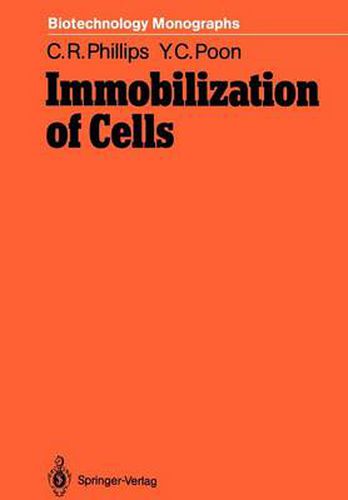Readings Newsletter
Become a Readings Member to make your shopping experience even easier.
Sign in or sign up for free!
You’re not far away from qualifying for FREE standard shipping within Australia
You’ve qualified for FREE standard shipping within Australia
The cart is loading…






This title is printed to order. This book may have been self-published. If so, we cannot guarantee the quality of the content. In the main most books will have gone through the editing process however some may not. We therefore suggest that you be aware of this before ordering this book. If in doubt check either the author or publisher’s details as we are unable to accept any returns unless they are faulty. Please contact us if you have any questions.
Growth of immobilized cells can be viewed as an alternative to growth of free cells in many instances. In others, immobilization confers a precision of control over the process not possible in free growth. Immobilization of cells can sometimes be considered to be a lower cost alternative to immobilization of enzymes. In this volume, immobilization procedures based on mechanical means and bonding of various types are examined, with detailed application examples. These applications include microorganisms, plant and animal cells, sub-cellular organelles and multiple enzyme systems. Particular attention is devoted to enzyme properties in immobilized cells and the properties of the carrier. The volume should provide the reader with a comprehensive overview of the subject, together with copious references. As well as serving as a research monograph, it could be used to provide reference material for a graduate course. Special thanks are due Mrs. JENNIFER KERBY for her dedicated work in the preparation of the manuscript, and IT-CHIN HSIEH for bibliographical assistance. COLIN R. PHILLIPS Toronto, July 1988 YIU C. POON v Table of Contents 1 Introduction. 1 References . 9 2 Methods of Cell Immobilization 11 2.1 Mechanical Immobilization . 11 2.1.1 Mycelial Pellet and Mat 11 2.1.2 Encapsulation .. 48 2.1.3 Dialysis Culture… 49 2.1.4 Entrapment. …. 50 2.2 Covalent Attachment 61 2.3 Ionic Attachment 62 2.3.1 Flocculation 62 2.3.2 Adsorption . 64 References . 66 3 Special Problems and Extended Applications . 75 3.1 Special Problems and Techniques .
$9.00 standard shipping within Australia
FREE standard shipping within Australia for orders over $100.00
Express & International shipping calculated at checkout
This title is printed to order. This book may have been self-published. If so, we cannot guarantee the quality of the content. In the main most books will have gone through the editing process however some may not. We therefore suggest that you be aware of this before ordering this book. If in doubt check either the author or publisher’s details as we are unable to accept any returns unless they are faulty. Please contact us if you have any questions.
Growth of immobilized cells can be viewed as an alternative to growth of free cells in many instances. In others, immobilization confers a precision of control over the process not possible in free growth. Immobilization of cells can sometimes be considered to be a lower cost alternative to immobilization of enzymes. In this volume, immobilization procedures based on mechanical means and bonding of various types are examined, with detailed application examples. These applications include microorganisms, plant and animal cells, sub-cellular organelles and multiple enzyme systems. Particular attention is devoted to enzyme properties in immobilized cells and the properties of the carrier. The volume should provide the reader with a comprehensive overview of the subject, together with copious references. As well as serving as a research monograph, it could be used to provide reference material for a graduate course. Special thanks are due Mrs. JENNIFER KERBY for her dedicated work in the preparation of the manuscript, and IT-CHIN HSIEH for bibliographical assistance. COLIN R. PHILLIPS Toronto, July 1988 YIU C. POON v Table of Contents 1 Introduction. 1 References . 9 2 Methods of Cell Immobilization 11 2.1 Mechanical Immobilization . 11 2.1.1 Mycelial Pellet and Mat 11 2.1.2 Encapsulation .. 48 2.1.3 Dialysis Culture… 49 2.1.4 Entrapment. …. 50 2.2 Covalent Attachment 61 2.3 Ionic Attachment 62 2.3.1 Flocculation 62 2.3.2 Adsorption . 64 References . 66 3 Special Problems and Extended Applications . 75 3.1 Special Problems and Techniques .